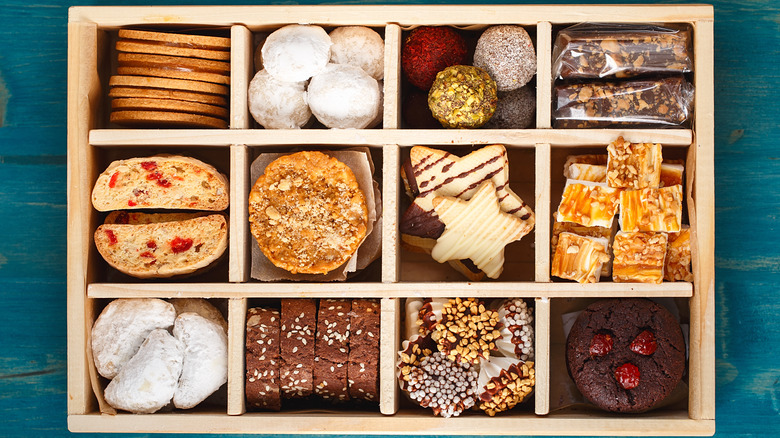Why You May Want To Consider Making Cookies With Cold Butter
It's rather common to have to take out a stick or two of butter in advance of baking a batch of cookies to let it soften. Softer butter certainly mixes in better, helping to bring the dough together thanks to the fat content, and adding flavor and texture. Meanwhile, even when using a mixer, cold butter isn't likely to create a smooth consistency and doesn't gel well with the other ingredients, especially sugar.
As noted by Bon Appétit, room temperature butter is ideal for many recipes, and when called for, you should always use it. That's because room temperature butter holds air, which means when creaming the butter and sugar together, the sugar crystals' sharper edges penetrate the soft butter help create bigger air pockets in the dough. This added air works to lighten up the final product, which might be perfect for soft and chewy cookies, but it's not always ideal for recipes where you don't want that extra air.
When to use cold butter in cookies
Pulling a stick of butter from the refrigerator at the last moment to add to your cookie recipe doesn't sound like a great idea, but doing so will enable small bits of fat to remain in the cookie. Just like using cold butter in biscuit recipes, using it in cookies helps to form small flakes and layers within the dough. When you want cookies that are flakey rather than chewy and soft, use cold butter to help break through the gluten that builds up during the mixing process, as noted by King Arthur Baking Company.
One route to take is to incorporate the butter into pre-mixed dry ingredients using a pastry cutter instead of a mixer, which will yield a harder result, rather than a smooth and creamy dough. You can also use slightly chilled butter in the dough, per Kitchn, and then place the formed dough back into the fridge to allow the butter to set and harden up. Then, when you roll it out and cut out the cookies, you'll have flakes and layers present.

